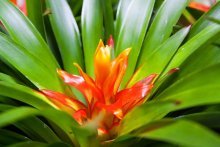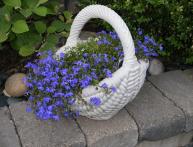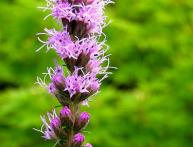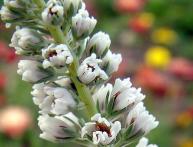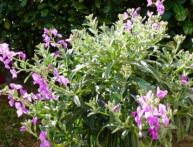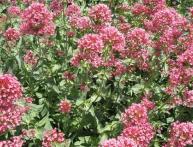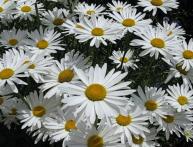Proper care for guzmania at home
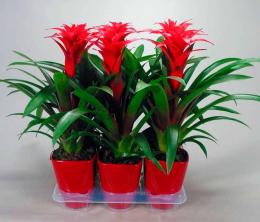
The exotic, colorful guzmania plant grows in the tropical forests of India and South America. There are more than 100 species in nature.
At home flower growers prefer to grow the Minor variety or reed guzmania. The plant is easy to care for, so even a novice gardener can grow this indoor flower.
Content:
- Plant characteristics
- How to care for Guzmania
- Watering requirements
- Lighting requirements and feeding
- Flowering and pest control
Plant characteristics
Guzmania is an ornamental herbaceous plant with long leaves that form an elegant rosette. At home, the flower reaches a height of no more than 30 cm. In the wild, the bush can grow up to 80 cm.
However, the plant blooms beautifully and actively develops at home, but it does not have enough humidity and sunlight to reach the size to which it grows in nature.
The bush is decorated with bright red bracts; orange, brown, and burgundy colors are also found. The bracts are much more beautiful than the small white inconspicuous flowers, which produce a large number of seeds. The flowering process is quite long - about three months. It is believed that Guzmania brings peace and harmony to the home. This flower improves the mood and vitality of household members.
How to care for Guzmania
The flower does not require special care, but there are still some nuances that should be taken into account when growing. The rules of care include compliance with certain conditions. When growing, do not forget that:
- guzmania is a heat-loving plant that needs warmth; it is necessary to ensure that the room temperature does not fall below 15 degrees
- loves moisture, its leaves need to be sprayed with water from time to time, this will require water at room temperature, rainwater has good properties
- It is important to ensure that there are no drafts in the room
- choose acidic soil for planting
A wide but shallow pot is ideal for a flower; a drainage layer is placed on its bottom. Guzmania needs to be fertilized from time to time; for this, a solution of stimulating fertilizers is useful. If there is not enough light and nutrition, flowers will not appear for a long time.
Watering requirements
Process glaze requires a special approach. When carrying out the watering procedure, it is important to consider some rules:
- guzmania is a moisture-loving plant, but excessive watering is dangerous for it; if there is excess moisture, the roots can wither
- during irrigation, water is not poured into the soil, but into a rosette of leaves; excess water that is not absorbed into the soil must be drained
- if the room temperature is high, then the flower needs to be watered often
- In winter, the flower is watered twice a week, in summer it is done more often, in summer it needs to be watered daily
- the water should not stagnate, the soil should dry out before the next watering

To remove dust and pests from the plant, wipe the leaves with a damp cloth once a week.When spraying, the flower pot is hidden from sunlight, otherwise burns in the form of dark spots will form on the leaves. If the stem begins to rot, this is a signal that the plant is receiving a lot of moisture. Watering will need to be cut back, otherwise the flower will die.
Lighting requirements and feeding
Guzmania loves light, but it is better not to place it in direct sunlight, otherwise the leaves may dry out. The pot with the plant is placed in partial shade. The flower will feel best on the western or eastern side. The flower is placed in the warmest room in the house.
The optimal air temperature in winter should be no lower than 18 degrees. And in summer you need to make sure that it does not rise above 25 degrees. When growing a flower, you can do without fertilizers. And yet, to speed up the flowering process and its duration, it is necessary to periodically fertilize the flower.
Video about the correct transplantation of Guzmania:
A fertilizer intended for orchids. The prepared solution is poured into the outlet. For feeding, you can purchase at a flower shop a mixture specially designed for bromeliad plants, which include guzmania.
Flowering and pest control
Guzmania blooms in the third year of life. The flowering process lasts for several months. This stage is the final stage in the life of this flower. After the plant fades, it dies and its leaves begin to gradually dry out.
Typically, guzmania blooms in summer or spring. After the flowering period ends, the peduncle and leaves are cut off. Now the pot needs to be placed in a darkened room to speed up the appearance of babies.After some time, fresh shoots should appear from which a new flower can be grown.
The plant tolerates unfavorable conditions well, but it is susceptible to pest infestation. The enemies are:
- spider mite
- scale insect
- mealybug

Parasites settle on leaves and eat them. In order to get rid of pests, you need to wipe them with a damp sponge or cloth soaked in soapy water. If the infection has become significant, you can use chemicals. Insecticides must be poured into the outlet.
Gray spots may form on the leaves. Most often this indicates that a fungus has developed. They fight it with a fungicide solution. If you violate the rules of care, you can destroy the flower. In order for the plant to actively grow and develop, proper care is required.


